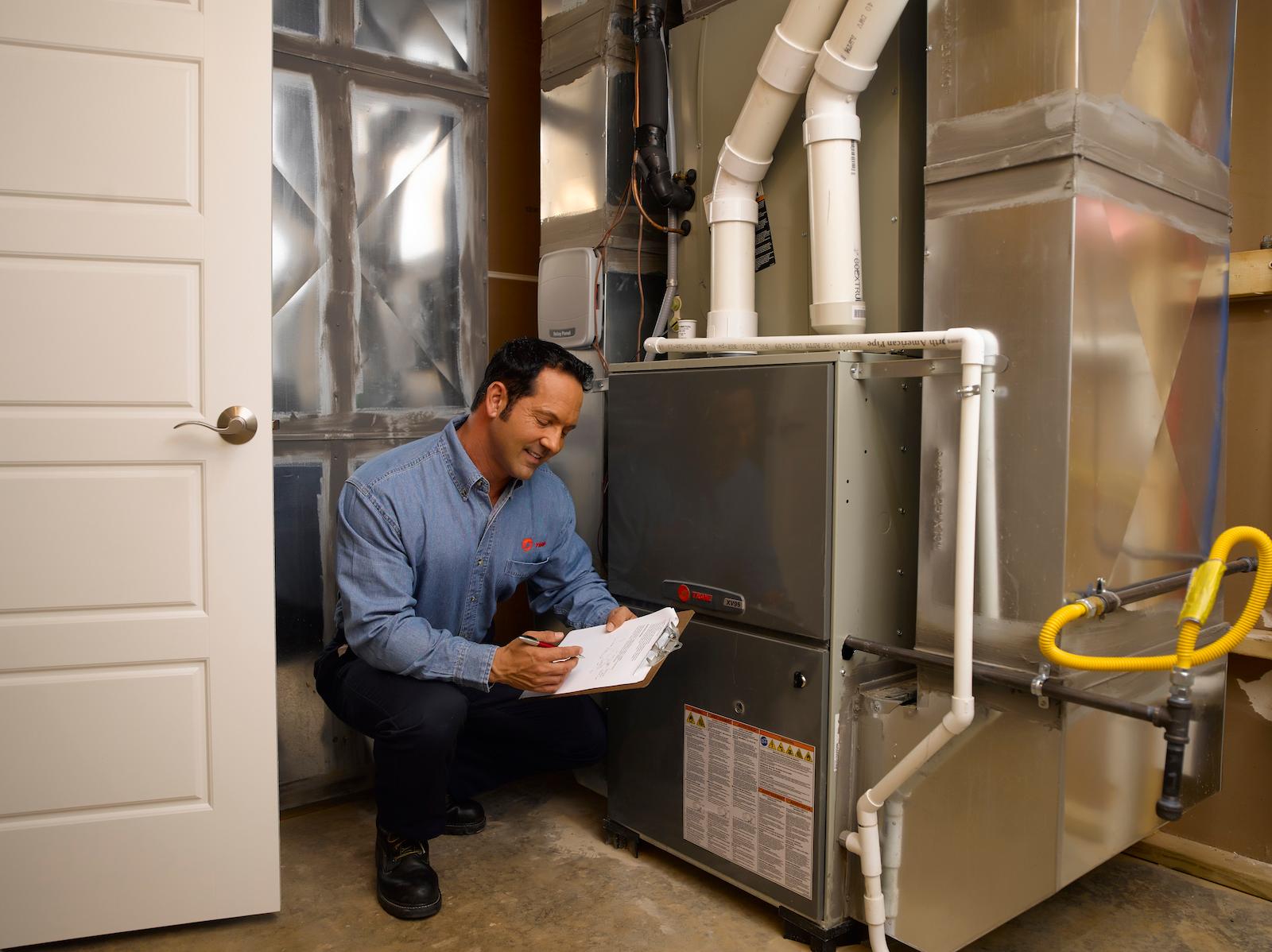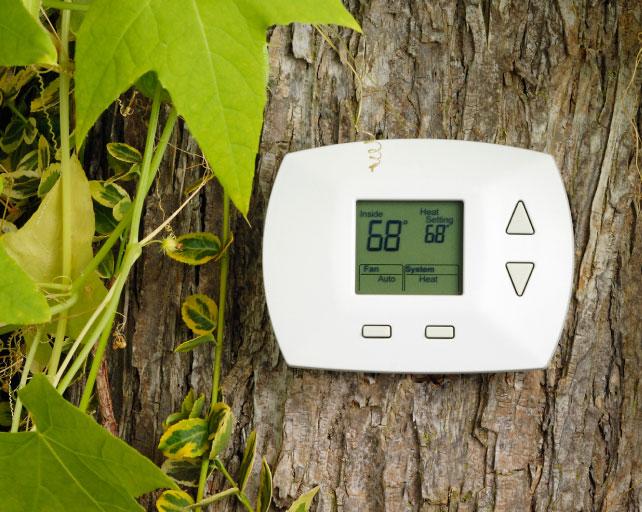Federal Sustainability Requirements and Regulations, and How They Impact Homeowners
Explore sustainability regulations and how they directly impact homeowners.
As the global focus on sustainability intensifies, the residential heating, ventilation, and air conditioning (HVAC) industry is undergoing transformative changes. Federal sustainability requirements mark a significant milestone in the pursuit of energy efficiency and environmental responsibility in sustainable housing.
Objectives of Sustainability 2023
Focusing on residential heating, ventilation, and air conditioning (HVAC) systems, the goal of sustainability regulations is to enhance environmental responsibility and energy efficiency.
This involves reducing the carbon footprint of HVAC systems by targeting specific outcomes such as lowering energy consumption and curbing greenhouse gas emissions. The regulations not only address environmental concerns but also promote sustainable housing choices in residential HVAC systems. Additionally, they act as a driver for technological innovation in the HVAC industry, encouraging the development and adoption of cutting-edge, energy-efficient solutions.
Homeowners stand to benefit economically through financial incentives and rebates, creating a win-win situation where environmental responsibility goes hand in hand with long-term cost savings. Ultimately, sustainability measures aim to create a resilient future by ensuring that HVAC systems align with evolving environmental standards, preparing homes and communities for a changing climate and energy landscape.
Energy Efficiency Standards
At the core of sustainability are energy efficiency standards set for HVAC systems. The primary goal is to reduce energy consumption and curb greenhouse gas emissions. Understanding energy efficiency ratings for your HVAC system can help homeowners be prepared for changing energy regulations.
- SEER2 (Seasonal Energy Efficiency Ratio): SEER2 is a measure of the cooling efficiency of air conditioners and heat pumps. In the United States, for example, the minimum SEER rating for new residential central air conditioners and split systems is regulated by the U.S. Department of Energy (DOE).
- EER (Energy Efficiency Ratio): Similar to SEER, EER measures the efficiency of cooling, but it is based on a constant outdoor temperature. It is commonly used for window air conditioners.
- HSPF (Heating Seasonal Performance Factor): HSPF is a measure of the heating efficiency of heat pumps, particularly in colder climates. Like SEER, HSPF rating is regulated in some jurisdictions.
- AFUE (Annual Fuel Utilization Efficiency): AFUE is a measure of the efficiency of gas furnaces. It represents the percentage of fuel converted to heat. Higher AFUE ratings indicate higher efficiency.
- Energy Star Rating and Certification: HVAC equipment that meets certain energy efficiency criteria may be eligible for Energy Star certification, a program run by the U.S. Environmental Protection Agency (EPA). Many countries have similar programs.
Reducing Energy Consumption and Greenhouse Gas Emissions
Federal sustainability requirements represent a paradigm shift in the efficiency of HVAC systems. Homeowners will benefit not only from lower energy bills but also from contributing to a greener planet.
By implementing these measures, homeowners can significantly contribute to environmental sustainability and reduce long-term energy costs.
- Upgrade to high-efficiency HVAC equipment with a high SEER for air conditioners and a high AFUE for furnaces.
- Install programmable or smart thermostats for optimized heating and cooling based on occupancy patterns.
- Ensure proper insulation, sealing, and regular maintenance to optimize HVAC performance.
- Utilize natural ventilation and passive cooling strategies to reduce reliance on mechanical systems.
- Implement energy recovery ventilation (ERV) systems to improve indoor air quality and minimize energy waste.
- Educate family members about energy-efficient practices and behavior changes.
- Take advantage of government incentives, rebates, and programs promoting energy-efficient HVAC installations.
- Conduct energy audits to identify and prioritize home energy improvements.
- Combine these strategies to significantly reduce energy consumption and greenhouse gas emissions, contributing to environmental sustainability and cost savings.
Financial Incentives
While the prospect of upgrading HVAC systems may seem daunting, there are silver linings for homeowners seeking sustainable housing. Financial incentives and rebates are available to those who embrace energy-efficient regulations.
Financial incentives for ecofriendly homes are offered by various government agencies, utility companies, and sometimes private organizations to encourage homeowners to adopt energy-efficient practices and technologies. These incentives can help offset the initial costs of energy-efficient upgrades and make sustainable choices more accessible.
Here are common types of financial incentives:
- Tax Credits: Homeowners may qualify for inflation reduction act tax credits for certain energy-efficient home improvements. This may include upgrades to insulation, windows, doors, roofing, heating, ventilation, and air conditioning (HVAC) systems, as well as the installation of renewable energy systems like solar panels.
- Rebates: Utility companies and government programs often provide rebates for homeowners who invest in energy-efficient appliances, HVAC systems, lighting, and insulation. These rebates can be instant or redeemed after purchase.
- Grants: Some government agencies and non-profit organizations offer grants to homeowners for energy-efficient home upgrades. These grants may be targeted at specific improvements or offered as general incentives for sustainable practices.
- Low-Interest Loans: Financial institutions, as well as government-sponsored programs, may provide low-interest loans for energy-efficient home improvements. These loans help homeowners fund upgrades with favorable terms.
- Property Tax Incentives: In some regions, property tax incentives or abatements are available for homeowners who make energy-efficient improvements to their homes. This can result in reduced property tax obligations.
- PACE Financing: Property Assessed Clean Energy (PACE) financing allows homeowners to finance energy-efficient upgrades through a special assessment on their property tax bill. Repayment is tied to the property, not the individual, and stays with the property if it is sold.
- Energy-Efficient Mortgage Programs: Some lenders offer Energy-Efficient Mortgage (EEM) programs that allow homebuyers to finance energy-efficient improvements as part of their mortgage. This can be a cost-effective way to include upgrades in the overall home financing.
- Utility Bill Incentives: Some utility companies offer incentives directly on utility bills for reducing energy consumption or participating in energy efficiency programs. These may include rewards for reducing peak-time energy usage or for using energy-efficient appliances.
- Home Energy Audits: Some programs offer free or subsidized home energy audits to identify areas for improvement. The audit itself may not be a direct financial incentive, but the information gained can guide homeowners in making cost-effective energy-efficient upgrades.
- Renewable Energy Credits (RECs): Homeowners generating renewable energy, such as solar power, may be eligible for Renewable Energy Credits. These credits can be sold or traded, providing additional financial benefits.
Refrigerant Usage and Lifecycle Impact
AC refrigerant usage is pivotal in determining the energy efficiency of HVAC systems. Traditional refrigerants with high Global Warming Potential (GWP), such as hydrofluorocarbons (HFCs), are being phased out globally due to environmental concerns. The shift toward low-GWP alternatives, including hydrofluoroolefins (HFOs) and natural refrigerants like ammonia and carbon dioxide, aims to reduce environmental impact and enhance system efficiency. The choice of refrigerant directly influences the performance of HVAC systems, affecting factors such as heat transfer efficiency and overall energy consumption. Ongoing research and regulatory compliance drive the industry toward sustainable refrigerant options, ensuring that HVAC systems prioritize both energy efficiency and environmental responsibility.
Resale Value Impact
Energy-efficient HVAC systems can positively impact the resale value of a home in several ways, making it more attractive to potential buyers seeking ecofriendly homes. Here are some key factors:
- Lower Operating Costs: Energy-efficient HVAC systems result in lower utility bills, attracting buyers seeking cost savings.
- Increased Home Value: Homes with energy-efficient features, including HVAC systems, are perceived as more valuable, potentially commanding a premium.
- Enhanced Home Comfort: Energy-efficient HVAC systems contribute to improved indoor comfort, better humidity control, and superior air quality.
- Environmental Considerations: Buyers favor homes with eco-friendly features and energy-efficient HVAC systems that align with sustainability goals.
- Home Certification and Ratings: Certain HVAC systems contribute to a home's energy efficiency rating, providing a marketable advantage.
- Marketing Advantage: Highlighting energy-efficient HVAC features in property listings can attract buyers seeking sustainable housing.
- Home Inspection Results: Well-maintained and energy-efficient HVAC systems receive positive feedback during the inspection process.
- Government Incentives: Areas offering incentives or rebates for energy-efficient improvements make homes with upgraded HVAC systems more attractive.
- Future-Proofing: Energy-efficient HVAC systems can be seen as a form of future-proofing, reducing the need for major upgrades and providing long-term cost savings.
Future-Proofing HVAC Systems
Future-proofing is about more than just compliance with federal sustainability requirements — it's about staying ahead of the curve. Selecting HVAC systems with built-in flexibility is essential to ensure home sustainability.
Here are key considerations and guidance for buying a new HVAC system:
- Modularity and Scalability: Opt for HVAC systems that are modular and scalable. This allows homeowners to easily upgrade or expand their systems as sustainability standards evolve or as their needs change over time.
- Compatibility with Renewable Energy Sources: Choose systems that are compatible with renewable energy sources, such as solar panels or geothermal systems. This flexibility enables homeowners to integrate cleaner energy options in the future, reducing reliance on traditional power sources.
- Smart Technology Integration: Select HVAC systems with smart technology integration. Smart thermostats, controllers, and communication protocols allow for easy adjustments, remote monitoring, and future updates to meet emerging efficiency standards.
- Variable-Speed Technology: Consider HVAC systems with variable-speed technology. These systems can operate at different speeds, adjusting to the actual heating or cooling needs of the home. This flexibility ensures energy efficiency under varying conditions.
- Compatibility with Alternative Refrigerants: Given the ongoing phase-out of high-GWP refrigerants, choose systems that are compatible with alternative, low-GWP refrigerants. This prepares homeowners for future regulatory changes and environmental considerations.
- Adaptive Controls and Learning Algorithms: Look for systems with adaptive controls and learning algorithms. These technologies allow HVAC systems to adapt to the specific needs and usage patterns of the home, optimizing efficiency over time.
- Open Communication Protocols: Prioritize systems with open communication protocols. Open protocols facilitate interoperability with a variety of devices and technologies, ensuring compatibility with emerging sustainability requirements and advancements.
- Compliance with Standards and Certifications: Ensure that the HVAC systems comply with existing energy efficiency standards and certifications. This indicates a commitment to sustainability and positions the system for future compliance with evolving regulations.
- Warranty and Long-Term Support: Choose HVAC systems from manufacturers that offer robust warranties and long-term support. This indicates a commitment to the reliability and adaptability of their products.
- Consultation with HVAC Professionals: Seek guidance from HVAC professionals or consultants who are knowledgeable about emerging sustainability trends. They can help homeowners choose systems that align with current standards and are likely to meet future requirements.
Contact Your Local Trane Comfort Specialist
Today’s homeowners find themselves at the forefront of a transformative movement. Beyond federal sustainability requirements, embracing home sustainability is an investment in the future. By understanding the nuances of these regulations and actively participating in eco-friendly practices, homeowners contribute not only to their well-being but also to a more sustainable and resilient planet.
Contact your local Trane Comfort Specialist to ensure your home is energy and cost-efficient, ready for whatever the future may bring.




